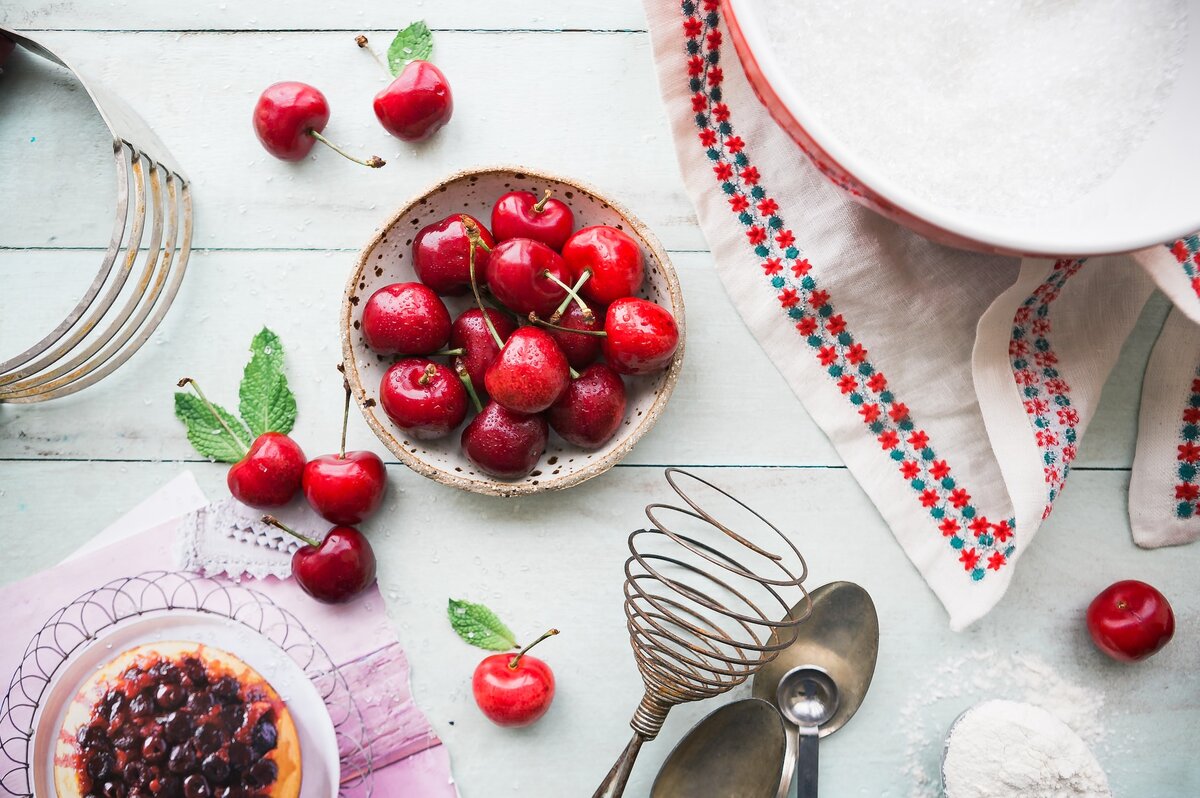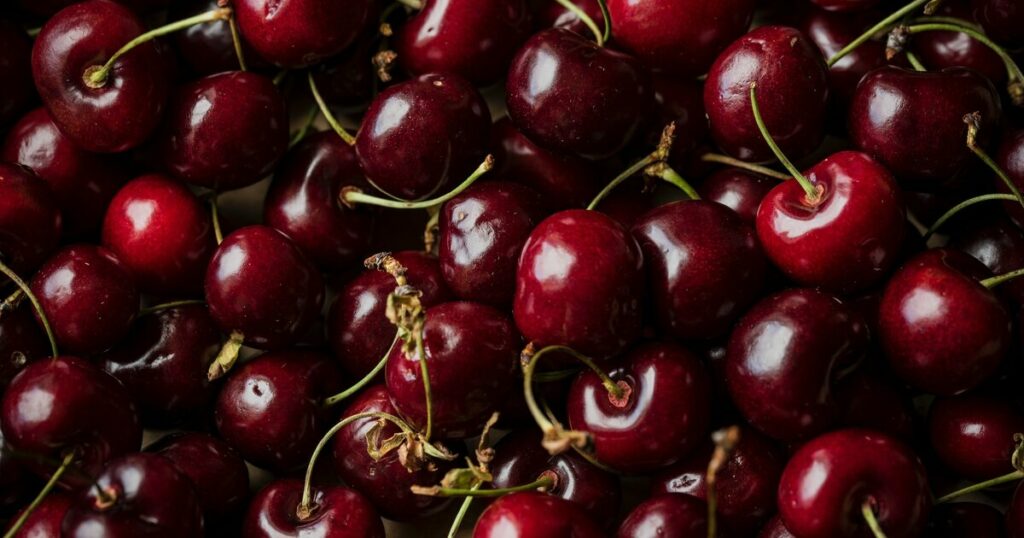Cherries, with their rich hue and succulent taste, are often a favorite choice for a healthy snack. But for those dealing with histamine intolerance, the pressing question is: are cherries high in histamine and do they exacerbate the issue? As we dive into the science behind histamines and their interaction with cherries, this often overlooked aspect becomes clearer, providing valuable insights for anyone looking to maintain a balanced, histamine-conscious diet. Join us as we explore the intricate relationship between this beloved fruit and histamines, revealing what you need to know for your health and enjoyment.
On this page:
Understanding Histamines and Their Impact on Health
Histamines are chemicals that your body uses as part of its immune response. They’re like little alarms that tell your body when it needs to fend off an invader, like pollen or germs. When you’re exposed to an allergen, your cells release histamines, which then latch onto special spots on other cells to alert your body to react. This can cause symptoms like sneezing, itching, or a runny nose.
But histamines don’t just come from your body’s reactions; they’re also found in many foods and can affect your health. When you eat foods high in histamines, they can sometimes trigger symptoms similar to an allergic reaction, especially if your body doesn’t break them down well. This can happen if you have a condition known as histamine intolerance.
The impact of histamines from foods on health is quite significant for some people. If your body has trouble dealing with histamines, eating histamine-rich foods can lead to symptoms like headaches, hives, or digestive issues. That’s because histamine can cause your blood vessels to expand and your blood pressure to drop, and it can also impact your gut, leading to symptoms like diarrhea or cramping.
It’s not just about avoiding foods high in histamines, though. Your body also has to break down the histamines you take in, which it does with the help of an enzyme called diamine oxidase (DAO). If your DAO levels are low, you might find that you’re more sensitive to histamine in foods. Some health conditions, medications, and even genetic factors can affect your DAO levels and your body’s ability to handle histamines.
Understanding how histamines work in your body and the impact they can have on your health is key to managing symptoms and feeling your best. It’s all about finding the right balance for your unique body.
The Surprising Truth: Are Cherries High in Histamine?
Cherries are often celebrated for their delightful taste and potential health benefits, including their role in reducing inflammation and aiding sleep. But for those concerned about histamine levels, the relationship between cherries and histamine can be quite surprising. Unlike many other fruits, cherries are considered to have a low histamine content, which means they’re less likely to trigger histamine-related symptoms in sensitive individuals.
Histamine is a natural compound that’s involved in immune responses and can cause symptoms like hives, itching, and headaches when present in high levels. While some foods are known to be high in histamine or to trigger its release, cherries are not typically among them. In fact, they contain quercetin, a natural antihistamine that may help stabilize mast cells and reduce the release of histamine into the bloodstream.
However, it’s important to note that everyone’s body reacts differently. A small number of people might find that cherries do affect their histamine levels, possibly due to individual sensitivities or the presence of other compounds in cherries that can influence histamine metabolism. But these cases are not the norm.
Moreover, the way cherries are processed can also play a role in their histamine content. Fresh cherries are likely to have lower histamine levels compared to canned or preserved cherries, where histamine can develop over time.
Overall, cherries are generally considered a safer choice for those managing histamine levels. Their anti-inflammatory properties, combined with their low histamine content and the presence of natural antihistamines like quercetin, make cherries a surprisingly histamine-friendly fruit. For people with histamine intolerance or those following a low histamine diet, cherries may be a flavorful addition that won’t compromise their well-being.
Navigating a Low Histamine Diet: Are Cherries Low Histamine?
If you’re among those who have histamine intolerance, understanding which foods to include and which to avoid is crucial. So, where do cherries fit into this picture?

Considering the varying histamine levels in foods, one might wonder, are cherries low histamine when incorporating them into their diet? They are not typically classified as high in histamines themselves, but they could potentially trigger the release of histamines in the body. This means that for some individuals with histamine intolerance, cherries might be tolerable in small quantities, while others may have to avoid them altogether.
When incorporating cherries into a low histamine diet, moderation is key. Start with a small amount to see how your body reacts. If there are no adverse effects, like headaches, skin rashes, or digestive issues, you may consider slowly increasing the quantity. But remember, everyone’s tolerance levels are different, and what works for one person may not work for another.
It’s also worth noting that the way cherries are processed or prepared can impact their histamine potential. Fresh cherries are generally a safer bet than canned or preserved ones since aging and processing can increase histamine levels in foods.
Additionally, the variety of cherry could make a difference. Sweet cherries tend to be lower in histamines compared to their tart counterparts. Opting for sweet cherries might be a safer choice if you’re trying to stick to a low histamine diet.
In conclusion, cherries can be included in a low histamine diet, but caution and individual experimentation are essential. By paying close attention to your body’s signals and choosing fresh, sweet cherries in moderation, you can enjoy the benefits of this juicy fruit without overstepping your histamine boundaries.
Histamine Intolerance: Symptoms, Diagnosis, and Management
Histamine intolerance can leave you feeling like your body is in a constant state of rebellion after eating certain foods. If you’re experiencing symptoms such as headaches, skin rashes, hives, digestive issues like diarrhea or bloating, a runny nose, or even asthma after eating high-histamine foods, you might have histamine intolerance. These symptoms are your body’s way of waving a red flag that it’s struggling to break down histamine properly.
Diagnosing histamine intolerance starts with paying attention to your body and how it reacts to foods. There isn’t a standard test to confirm this condition, so doctors often use an elimination diet to pinpoint the culprit. This involves removing high-histamine foods from your diet and then reintroducing them one by one to see which cause symptoms. Your doctor may also review your medical history and symptoms to rule out other possible conditions.
Managing histamine intolerance is a game of balance. It’s about finding out how much histamine your body can handle. You can do this by following a low-histamine diet, which involves choosing foods with lower levels of histamine and avoiding those known to trigger symptoms. This doesn’t mean you have to give up all your favorite foods. It’s about moderation and knowing your thresholds.
Medications like antihistamines can also provide relief, but they’re more of a temporary fix. The key is to work with a healthcare provider to develop a long-term strategy that includes diet changes, stress management, and possibly supplements like vitamin C and quercetin, which might help your body break down histamine more effectively. Remember, each person is different, so what works for one person might not work for another. It’s all about listening to your body and adjusting your diet and lifestyle accordingly.
Creating Cherries Histamine-Friendly Delectable Dishes
Cherries can be a delightful addition to a low histamine diet, offering a burst of flavor without a significant histamine punch. If you’re aiming to keep histamine levels in check, consider incorporating cherries into meals in a way that complements other low histamine foods.
Start your day with a cherry-infused smoothie by blending frozen cherries with histamine-friendly greens like kale and a splash of coconut water. For a protein boost, add a scoop of hemp seeds, which are not only low in histamine but also rich in essential amino acids.
Lunchtime could feature a quinoa cherry salad. Toss cooked quinoa with diced fresh cherries, chopped cucumber, and sliced scallions. Dress it lightly with olive oil and a squeeze of lemon juice—another histamine-safe option—for a refreshing, nutritious meal.

When it comes to dinner, cherries can be a unique addition to savory dishes too. Consider a cherry salsa to top grilled chicken or fish, both histamine-safe protein choices. Combine pitted cherries, finely chopped red onion, cilantro, and a dash of lime juice. This not only adds a pop of flavor and color but also keeps your histamine intake in check.
For dessert or a snack, homemade cherry sorbet can be a simple and sweet treat. Puree pitted cherries with a touch of maple syrup, if needed, and freeze the mixture until set. This can be a safer choice compared to store-bought desserts that may contain histamine-raising additives.
Remember, portion sizes matter, as consuming large quantities of even low histamine foods could potentially trigger a reaction in sensitive individuals. By incorporating cherries into your meals with moderation and balance, you can enjoy the rich flavors they offer while managing your histamine levels effectively.
Expert Tips for Managing Histamine Intake from Fruits
While cherries fall into a grey area, with some people reporting sensitivity and others not, there are several strategies you can employ to keep your histamine intake in check.
Firstly, opt for fresh, ripe fruits as they tend to have lower histamine levels than those that are overripe or canned. Histamines can build as fruits age, so consuming them quickly after purchase is advisable.
Secondly, freezing fruit can be a good option since freezing slows down histamine formation. If you’re sensitive to histamines and love cherries, try buying them fresh and then freezing them yourself. This can help prevent histamine levels from rising.
Third, remember that variety is key. Eating a diverse range of fruits can prevent high intake of histamines from any single source. If cherries are a concern, balance your fruit intake with other low histamine options like apples, pears, and blueberries.
Fourth, pay attention to your body’s responses. If you notice symptoms such as headaches, rashes, or digestive issues after eating certain fruits, take note and adjust your diet accordingly. Keeping a food diary can help identify patterns and potential triggers.
Lastly, consider consulting a dietitian or a healthcare provider who specializes in food sensitivities. They can offer personalized advice and may recommend a low histamine diet if necessary. They might also suggest supplements, like vitamin C and quercetin, which can help stabilize mast cells and reduce the release of histamine in the body.
By being mindful of the fruits you eat and how you store and consume them, you can manage histamine intake effectively. Remember, moderation is essential, and being aware of your body’s reactions will guide you in maintaining a healthy, balanced diet.
Balancing Taste and Health in Your Histamine-Conscious Diet
Navigating the world of histamine intolerance can be challenging, but understanding how cherries fit into your diet is a step toward managing your health without sacrificing flavor. While investigating whether cherries histamine levels are a concern, the key is moderation and understanding your body’s unique reactions. If you’ve identified that you can tolerate cherries, incorporating them into your low histamine meals can add a burst of taste and nutrition. Remember, individual responses can vary, and keeping a food diary may be helpful in tracking your symptoms. Always consult with a healthcare professional if you’re unsure about your histamine limits. By being mindful of your histamine intake and listening to your body’s cues, you can enjoy the sweet rewards of cherries while keeping your health in check.



